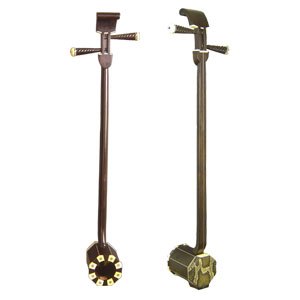The history of falling beard
612 views · Organized by 日记里的汤姆 on 2022-03-10
Chinese rubbing stringed musical instruments. Also known as Quhu and Erxian. Mainly spread in Henan and Shandong, it is the main accompaniment instrument of Henan Quju Opera, Shandong Qinshu and Lu Opera. The predecessor of Zuihu was Xiaosanxian.

According to the textual research, in the period of the Republic of China, Zhu Wanming, an important founder of ququ opera, discussed with some "fanciers" in Datun and Wangtun in the southern suburbs of Luoyang to transform the main instrument of ququ opera.
They refer to the main instruments of Yuetiao and Henan pendants, and based on the three-string, they changed the plate resonance of the three-string into a concertina tube, and covered the top with python skin or snake skin to increase the volume, and the three strings for plucking Instead of two strings, a new instrument was created that had never been there before - he and the artists named it "Zuihu".
Due to its long stem, large barrel, high volume, and soft tone, Zui Hu is very pleasant and suitable for performances in squares and stages. Since then, Zui Hu has been designated as the main instrument of the opera. At the same time, Zhu Wanming and everyone added percussion instruments such as seven cymbals and eight cymbals to the accompaniment of the opera, which improved the accompaniment effect, and suddenly added a grand momentum to the "minor tune" opera and expanded the expressive power of the opera.
Involving musical instruments
Zuihu (Quhu) (pinyin: zhuì hú) is a Chinese rubbing stringed musical instrument. Also known as Quhu and Erxian. Mainly spread in Henan and Shandong, it is the main accompaniment instrument of Henan Quju Opera, Shandong Qinshu and Lu Opera.
Guess you like
Organized by 茯苓 on 2022-04-12
Lotus Fall has been passed down for more than a thousand years and has been widely popular in Shanxi, Henan, Shandong and other regions, but as the old artists are getting older, they are facing a crisis of survival. After Wang Jinlong, who started learning art at the age of 14, put this ancient quyi on Douyin, it has attracted the attention of a large number of young people, and he has seen new hope. At the same time, netizens will reward and encourage him when watching the live broadcast, which gives him more motivation to inherit this traditional art.
read >>
Organized by 沈梦溪 on 2022-04-02
He loves string music very much. He is the leader and soul of the Yue Mo troupe in the village. For decades, he has often led the troupe members to perform for the surrounding people. He is Wang Chaoying from Shishichang Village, Zunhuadian Town, High-tech Zone. He has won honors such as municipal village treasures, and he is also an advanced individual at the municipal and provincial levels.
read >>
 渝公网安备 50010702504639号
渝公网安备 50010702504639号